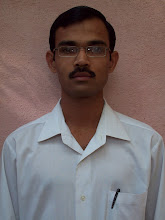Write up on LFA
Lingaraj.B.H
29/03/09
Introduction:
On 23, March Mr. Prakash.Bhat engaged the class, he explained about logical frame analysis. This is a tool that helps planners and project designers to think logically and present it before the funding agencies so that they can get financial assistance for their project.
LFA gives overall information regarding the project and it shows hierarchy that includes objectives, outputs, activities etc. He went on narrating through slides. Previously I didn’t know what LFA is? , after 3 days I came to know. Last day we prepared an LFA on a project so that we can understand it well. Then I realized that, this is a very basic data needed to get fund for any projects to be implemented.
Module description:
Before LFA we have to draw a problem tree to identifying a problem that represents the cause and effect relation. Then the objective tree, it reflects on the solutions that are available to solve the problem and it is transformed into an objectives tree by restating the problems as objectives and it can be viewed in the positive side.
The log frame model has been developed in the United States. It has 3 steps namely 1) Top down (objectives): Here we have 4 points, i.e. goals, purposes, outputs, and activities
2) Work across (measurable indicators and means of verification): it is mainly focus on quality, quantity, and time. According to this 1 stage will be measured and verified.
3) Bottom up (assumptions): these are risks that may be happen in future if so the project will be affected as it’s not in our hands.
After these steps it will be presented before the donors and with the acceptance and assistance it will be implemented.
Key points:
Stakeholder Analysis, Problem Analysis, Objective Analysis, Matrix Assumptions, Objective Indicators Verification. These are the main points to be kept in the mind while doing LFA.
Learning:
I knew that before any project we should prepare LFA and at the same time it is so important that overall details make us to think logically so that we can succeed in that without fail. Hence I believe LFA strengthens our plan.
I will strat MILK PROCESSING UNIT
16 years ago

